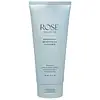What's inside
What's inside
 Key Ingredients
Key Ingredients

 Benefits
Benefits

 Concerns
Concerns

 Ingredients Side-by-side
Ingredients Side-by-side

Water
Skin ConditioningSodium Lauroyl Methyl Isethionate
CleansingCocamidopropyl Betaine
CleansingSodium Methyl Oleoyl Taurate
CleansingSodium Cocoyl Isethionate
CleansingVaccinium Myrtillus Fruit Extract
Skin ConditioningSodium Chloride
MaskingSodium Benzoate
MaskingPolyquaternium-10
Potassium Sorbate
PreservativeSaccharum Officinarum Extract
MoisturisingPanthenol
Skin ConditioningTrisodium Ethylenediamine Disuccinate
Citrus Limon Fruit Extract
MaskingCitrus Aurantium Dulcis Fruit Extract
MaskingSodium Hyaluronate
HumectantAloe Barbadensis Leaf Juice
Skin ConditioningAcer Saccharum Extract
Skin ConditioningPropanediol
SolventTocopherol
AntioxidantPhenoxyethanol
PreservativeMaltodextrin
AbsorbentEthylhexylglycerin
Skin ConditioningWater, Sodium Lauroyl Methyl Isethionate, Cocamidopropyl Betaine, Sodium Methyl Oleoyl Taurate, Sodium Cocoyl Isethionate, Vaccinium Myrtillus Fruit Extract, Sodium Chloride, Sodium Benzoate, Polyquaternium-10, Potassium Sorbate, Saccharum Officinarum Extract, Panthenol, Trisodium Ethylenediamine Disuccinate, Citrus Limon Fruit Extract, Citrus Aurantium Dulcis Fruit Extract, Sodium Hyaluronate, Aloe Barbadensis Leaf Juice, Acer Saccharum Extract, Propanediol, Tocopherol, Phenoxyethanol, Maltodextrin, Ethylhexylglycerin
Water
Skin ConditioningGlycerin
HumectantPropylene Glycol
HumectantCoco-Glucoside
CleansingAmmonium Polyacryloyldimethyl Taurate
Emulsion StabilisingGlycolic Acid
BufferingSodium Methyl Cocoyl Taurate
CleansingNiacinamide
SmoothingLactic Acid
BufferingSodium Hydroxide
BufferingCarica Papaya Fruit Extract
Skin ConditioningIlex Paraguariensis Leaf Extract
PerfumingPassiflora Edulis Fruit Juice
Skin ConditioningZingiber Officinale Root Extract
MaskingAscorbyl Glucoside
AntioxidantCaffeine
Skin ConditioningCapryloyl Salicylic Acid
ExfoliatingPhytic Acid
Tocopherol
AntioxidantBisabolol
MaskingCaprylyl Glycol
EmollientCitric Acid
BufferingCoconut Acid
CleansingEthylhexylglycerin
Skin ConditioningHelianthus Annuus Seed Oil
EmollientSodium Chloride
MaskingTrideceth-9
EmulsifyingLimonene
PerfumingLinalool
PerfumingCI 40800
Cosmetic ColorantChlorphenesin
AntimicrobialPhenoxyethanol
PreservativePotassium Sorbate
PreservativeSalicylic Acid
MaskingSodium Benzoate
MaskingParfum
MaskingWater, Glycerin, Propylene Glycol, Coco-Glucoside, Ammonium Polyacryloyldimethyl Taurate, Glycolic Acid, Sodium Methyl Cocoyl Taurate, Niacinamide, Lactic Acid, Sodium Hydroxide, Carica Papaya Fruit Extract, Ilex Paraguariensis Leaf Extract, Passiflora Edulis Fruit Juice, Zingiber Officinale Root Extract, Ascorbyl Glucoside, Caffeine, Capryloyl Salicylic Acid, Phytic Acid, Tocopherol, Bisabolol, Caprylyl Glycol, Citric Acid, Coconut Acid, Ethylhexylglycerin, Helianthus Annuus Seed Oil, Sodium Chloride, Trideceth-9, Limonene, Linalool, CI 40800, Chlorphenesin, Phenoxyethanol, Potassium Sorbate, Salicylic Acid, Sodium Benzoate, Parfum
Ingredients Explained
These ingredients are found in both products.
Ingredients higher up in an ingredient list are typically present in a larger amount.
Ethylhexylglycerin (we can't pronounce this either) is commonly used as a preservative and skin softener. It is derived from glyceryl.
You might see Ethylhexylglycerin often paired with other preservatives such as phenoxyethanol. Ethylhexylglycerin has been found to increase the effectiveness of these other preservatives.
Phenoxyethanol is a preservative that has germicide, antimicrobial, and aromatic properties. Studies show that phenoxyethanol can prevent microbial growth. By itself, it has a scent that is similar to that of a rose.
It's often used in formulations along with Caprylyl Glycol to preserve the shelf life of products.
Potassium Sorbate is a preservative used to prevent yeast and mold in products. It is commonly found in both cosmetic and food products.
This ingredient comes from potassium salt derived from sorbic acid. Sorbic acid is a natural antibiotic and effective against fungus.
Both potassium sorbate and sorbic acid can be found in baked goods, cheeses, dried meats, dried fruit, ice cream, pickles, wine, yogurt, and more.
You'll often find this ingredient used with other preservatives.
Learn more about Potassium SorbateSodium Benzoate is a preservative. It's used in both cosmetic and food products to inhibit the growth of mold and bacteria. It is typically produced synthetically.
Both the US FDA and EU Health Committee have approved the use of sodium benzoate. In the US, levels of 0.1% (of the total product) are allowed.
Sodium benzoate works as a preservative by inhibiting the growth of bacteria inside of cells. It prevents the cell from fermenting a type of sugar using an enzyme called phosphofructokinase.
It is the salt of benzoic acid. Foods containing sodium benzoate include soda, salad dressings, condiments, fruit juices, wines, and snack foods.
Studies for using ascorbic acid and sodium benzoate in cosmetics are lacking, especially in skincare routines with multiple steps.
We always recommend speaking with a professional, such as a dermatologist, if you have any concerns.
Learn more about Sodium BenzoateChances are, you eat sodium chloride every day. Sodium Chloride is also known as table salt.
This ingredient has many purposes in skincare: thickener, emulsifier, and exfoliator.
You'll most likely find this ingredient in cleansers where it is used to create a gel-like texture. As an emulsifier, it also prevents ingredients from separating.
There is much debate on whether this ingredient is comedogenic. The short answer - comedogenic ratings don't tell the whole story. Learn more about comegodenic ratings here.
The concensus about this ingredient causing acne seems to be divided. Research is needed to understand if this ingredient does cause acne.
Scrubs may use salt as the primary exfoliating ingredient.
Learn more about Sodium ChlorideTocopherol (also known as Vitamin E) is a common antioxidant used to help protect the skin from free-radicals and strengthen the skin barrier. It's also fat soluble - this means our skin is great at absorbing it.
Vitamin E also helps keep your natural skin lipids healthy. Your lipid skin barrier naturally consists of lipids, ceramides, and fatty acids. Vitamin E offers extra protection for your skin’s lipid barrier, keeping your skin healthy and nourished.
Another benefit is a bit of UV protection. Vitamin E helps reduce the damage caused by UVB rays. (It should not replace your sunscreen). Combining it with Vitamin C can decrease sunburned cells and hyperpigmentation after UV exposure.
You might have noticed Vitamin E + C often paired together. This is because it is great at stabilizing Vitamin C. Using the two together helps increase the effectiveness of both ingredients.
There are often claims that Vitamin E can reduce/prevent scarring, but these claims haven't been confirmed by scientific research.
Learn more about TocopherolWater. It's the most common cosmetic ingredient of all. You'll usually see it at the top of ingredient lists, meaning that it makes up the largest part of the product.
So why is it so popular? Water most often acts as a solvent - this means that it helps dissolve other ingredients into the formulation.
You'll also recognize water as that liquid we all need to stay alive. If you see this, drink a glass of water. Stay hydrated!
Learn more about Water